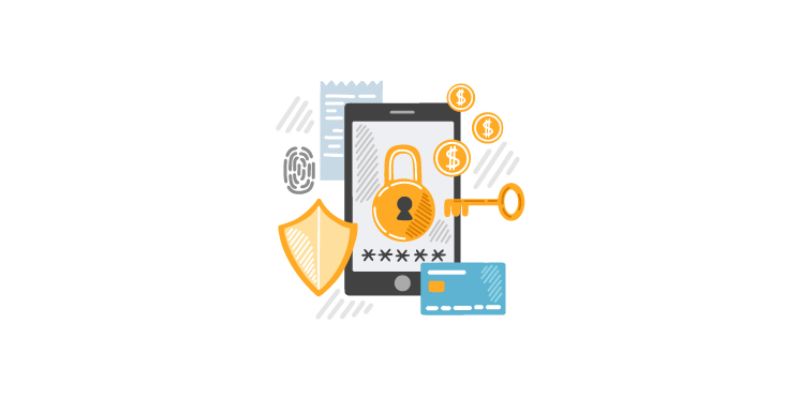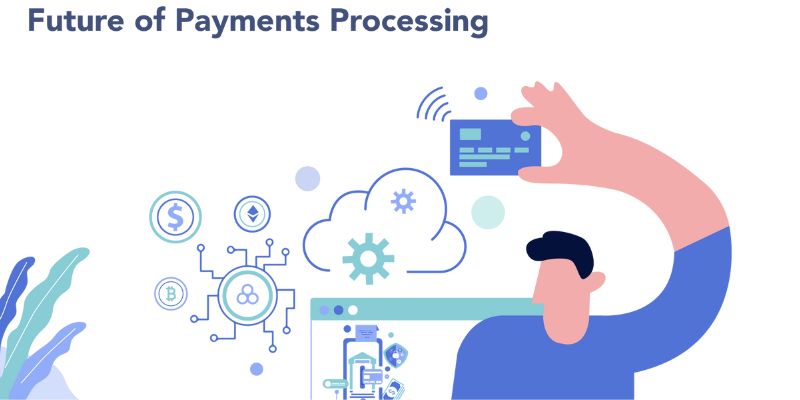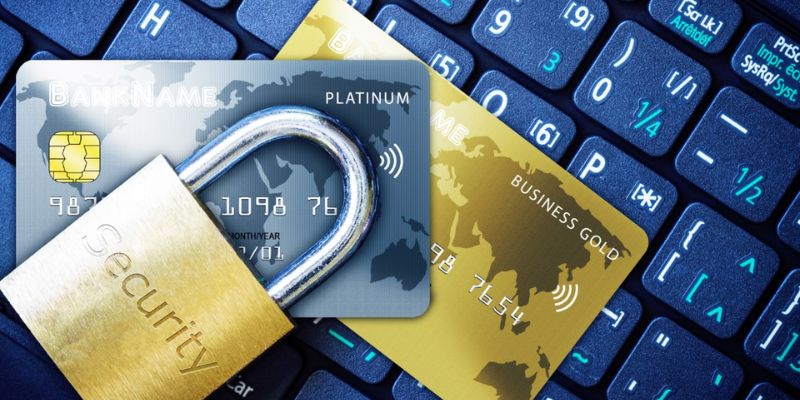Future of digital payment platform security: it’s a topic that touches everyone. We swipe, tap, and click every day, trusting our precious funds to the digital ether. But how secure are these platforms? Beneath the surface, there’s a tech war raging—a war for your wallet’s safety. From biometric breakthroughs to blockchain’s promise, I’ll walk you through what’s on the horizon. With hackers growing smarter, it’s essential to ask: Is your money truly safe? I’ve explored the latest defenses shaping the safety net of your transactions. Let’s dive into a world where your fingerprint could be your financial fortress, where AI stands guard over your hard-earned cash, and where cutting-edge encryption shields your savings from digital threats. Join me in unmasking the future that’s already unfolding.
Biometric Advancements in Digital Payments: Raising the Security Bar
Fingerprint and Facial Recognition: The Frontline of Payment Verification
These days, your face and fingers keep your money safe. Fingerprint and facial recognition are what we call biometric authentication in payment tech. They make sure you are you when you’re buying stuff. They’re easy to use and hard for bad guys to trick.
Stores and banks love them because they help stop theft. When you pay, you just show your face or touch a sensor. If it matches what’s on file, boom – payment goes through. This is way safer than typing a PIN that someone might see.
Also, your details are kept in a kind of locked box called encryption. Nobody can read them unless they have the key. So, if the bad guys get your info, it’s useless to them. It’s like having a secret language for your money.
Iris Scans and Beyond: Next-Generation Biometrics
But wait, there’s more! Beyond your fingers and face, there’s a thing called an iris scan. It looks at your eye to check who you are. It’s super exact because no two eyes are the same, not even yours and your twin’s.
In the future, we might use our voice or even how we walk to pay. These are multi-factor authentication, which is like having more than one lock on your door. It’s extra hard for thieves to break through.
We also have things called real-time monitoring. It’s like having a guard check your account all the time. It finds anything odd and flags it up, keeping your cash safe.
And then there’s your smartphone. It’s becoming a wallet now. Phone makers keep making them safer so you can pay with a tap. This is called securing contactless transactions. It’s fast, it’s easy, and it keeps getting better.
Think about it: soon, paying for a toy, snack, or even a car will just need a smile or a wink. That’s where we’re going with all this tech, and it’s pretty amazing. But remember, the bad guys keep learning, too. So we have to stay one step ahead, always working on new tricks to keep your money yours. It’s a big job, but hey, someone’s got to do it, right?

Blockchain: The Game Changer for Payment System Security
Decentralized Ledgers for Fraud Prevention
One big step in payment security is blockchain. It can stop fraud better than old systems. This is because blockchain spreads data across many places. No one person controls it all. So, it’s harder for bad guys to mess with it. It’s like having lots of safe boxes, not just one. Each time a payment is made, every box checks if it’s good. This way, fake payments don’t get through.
Blockchain makes sure each payment is what it says. It uses codes that are tough to break. People call this encryption. With blockchain, we also see who pays and who gets money right away. No need to wait. This quick check stops fraud as it happens.
Smart Contracts and Real-Time Clearance
Now let’s talk about smart contracts. These are like normal contracts but they run on their own. When you do what the contract says, it goes to the next step without a person checking it. This is great for real-time clearance – which means payments clear without delay.
Smart contracts make things automatic. They follow rules we set before. So if the rules say the payment is okay, it goes through at once. This means money moves fast and safe. People can feel sure because everything happens like it should, no tricks.
Payments systems are changing, and blockchain is a huge part of that. These systems make our money safe. With blockchain, we can trust that our payments are secure and quick. It’s an exciting time in payment tech for everyone.

Artificial Intelligence: Revolutionizing Fraud Detection
Machine Learning Models for Anomaly Detection
Let’s jump right in and chat about how we keep your money safe. Think of machine learning like a super-smart watchdog. This watchdog learns what normal looks like for your digital transactions. If it sees something odd, it barks. But not with sound—with alerts. That’s anomaly detection for you. It’s smart and gets smarter over time.
This watchdog never sleeps. It’s always there, sifting through your transactions. It looks for patterns that don’t fit. Maybe it spots a purchase in a place you’ve never shopped. Or it detects a large money transfer at an unusual time. When this happens, the system flags it. Those flags? They could stop fraud in its tracks.
Now, the details. We train our models with lots of data. We show them millions of good and bad payment behaviors. The models learn to tell them apart. This kind of AI doesn’t just work hard—it works smart. It adapts as new tricks from fraudsters come out. So, even as bad guys get clever, your money stays safe.
AI in Real-Time Monitoring and Risk Assessment
Real-time monitoring with AI is your money’s 24/7 bodyguard. It checks transactions as they happen. Instantly. If something seems risky, it can put a hold on the action. This means you’re protected all the time, every time.
Risk assessment isn’t about wild guesses. AI looks at your payment history, learns your habits. It uses this to weigh the risks of each new transaction. Think of it as a set of digital scales. On one side, your usual spending habits. On the other, the current transaction. If the balance tips oddly, the AI takes note. This happens in the blink of an eye.
Now, here’s something cool. AI also factors in tons of other information. Things like time of day, location, even the device you’re using. It’s like putting together a huge puzzle. If the pieces don’t fit, AI raises the alarm.
To sum it up, AI in fraud detection is like having a superhero for your finances. It’s not perfect—no hero is. But with its sharp eyes and quick reflexes, it’s tough to beat. And the best part? It’s getting better every day. So as we move forward, you can feel more at ease knowing your money has a strong line of defense against those cyber villains.

The Fortification of Digital Wallets and Encryption
Multi-Layered Defense Strategies for Wallet Security
We know you worry about wallet safety. We got your back. Let’s dive into multi-layered defense. It’s like an onion. Each layer adds more protection. It starts with your password. That’s layer one. Then, we add things like security questions and device scanning. This makes it hard for bad guys to get in.
How does it work, really? First, you have multi-factor authentication. You might get a code on your phone. You must punch this in to get access. This step stops thieves cold if they lack your phone. Next, there’s real-time monitoring. It checks your payment actions as they happen. If something odd pops up, it alerts you. It’s like having a watchdog for your money.
Advanced Encryption Protocols and Future Trends
Now, let’s talk encryption. It’s a secret code for your data. Only you and your wallet understand it. Encryption scrambles your info. So, if someone grabs it, they can’t read it. It’s all gibberish without the key.
But what’s new in encryption? Well, tokenization is hot right now. It turns your card number into random numbers. Each time you use it, it’s different. So, even if someone steals a token, it’s useless later.
Some say blockchain is next. It’s a chain of data blocks. It’s super secure because it’s spread out. No one person can mess with it. This could change payment security big time.
And don’t forget about the future. Quantum computing could crack codes quick. So, we’re always on our toes, thinking of new ways to stay safe. We’re always upgrading, so you don’t have to worry.
Protection grows as threats evolve. That’s our promise to you. Your digital wallet will stay tough, so your money stays safe. Keep an eye out for new tech. We sure will. It’ll keep your payments safe as we march into tomorrow.
We’ve explored key tech upgrades making digital payments safer. First, we talked about how using your face and fingerprints can stop the wrong people from using your money. And it’s not just about that – we’re moving toward cool tech like iris scans.
Then, we looked at blockchain. It’s like a super secure diary that’s hard to cheat. This tech uses special codes to make sure every payment is clear and correct.
Next, AI was our focus. This smart tech quickly finds odd spending to flag fraud fast. It keeps an eye on your money all the time, learning as it goes.
Lastly, we spoke about digital wallets. They now have tough layers of security and use secret codes that are tough to crack.
In the end, all this means that when you pay for stuff online, you can stress less about bad guys getting your cash. These tech tools are like superheroes for your money, fighting off fraud and keeping your hard-earned money safe. Remember, the future of secure spending looks bright, thanks to these smart updates!
Q&A :
What Measures Are Being Implemented to Enhance Digital Payment Platform Security in the Future?
Implementations in digital payment security are constantly evolving to counteract emerging threats. Future enhancements typically include multi-factor authentication, end-to-end encryption, tokenization, advanced machine learning algorithms for fraud detection, and the adoption of biometric verification methods such as fingerprint recognition and facial recognition. Emphasis on complying with international security standards like PCI DSS also plays a crucial role in ensuring safe transactions.
How Will Biometric Technology Impact the Security of Digital Payment Platforms?
Biometric technology is set to significantly increase the security of digital payment platforms by offering a unique layer of verification that is extremely difficult to replicate. This includes methods like fingerprint scanners, iris recognition, and voice authentication. As biometrics verifies the identity of the user based on physical characteristics, it adds a substantial barrier against unauthorized access, thereby minimizing the risk of fraud and theft.
Will Blockchain Technology Play a Role in the Future Security of Digital Payment Systems?
Blockchain technology is anticipated to play a transformative role in securing digital payment systems due to its inherent features of decentralization, transparency, and immutability. By creating a secure and tamper-evident ledger for transactions, blockchain can reduce the potential for fraud and ensure the integrity of payment processes. It’s expected that embracing blockchain will further facilitate secure, fast, and cost-efficient transactions in digital payment platforms.
In What Ways Are Artificial Intelligence and Machine Learning Expected to Boost Payment Security?
Artificial Intelligence (AI) and Machine Learning (ML) are forecasted to dramatically boost payment security by providing sophisticated tools for real-time fraud detection and risk management. These technologies can analyze vast quantities of data to identify and learn from patterns, helping to prevent fraudulent transactions and even predict and mitigate potential security breaches before they occur.
How Important is Consumer Education in the Future of Digital Payment Platform Security?
Consumer education remains a critical component in the security of digital payment platforms. As technology advances, educating users about safe online payment practices, recognizing phishing attempts, and the importance of protecting personal data is vital. A well-informed user base can better cooperate with technological safeguards and act as a first line of defense against fraud.

